The old capital of the Kingdom of Castilla-Leon, Burgos lies in northern Spain. It was founded as an outpost during the Reconquista and is located next to the Arlanzon River. Burgos’ rich history is reflected in the numerous ancient remains scattered throughout the town. Its ancient and medieval history has shaped the way for these 10 things to see and do in Burgos.
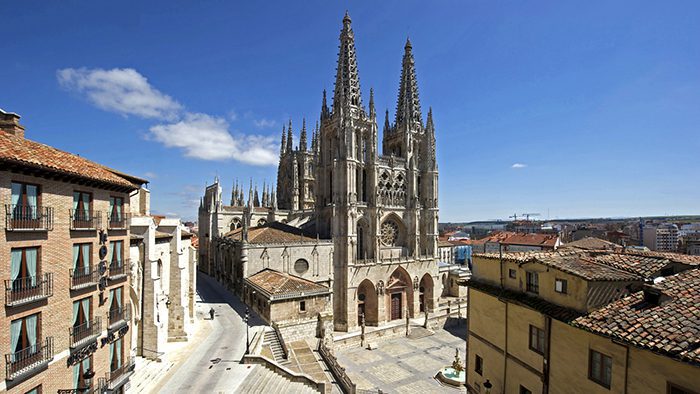
Throughout its history, the citizens of Burgos have been involved in numerous wars. The Moors often attempted to control the area. The kingdoms of Leon and Navarre often clashed in this region before the kingdom of Castile eventually absorbed Leon.
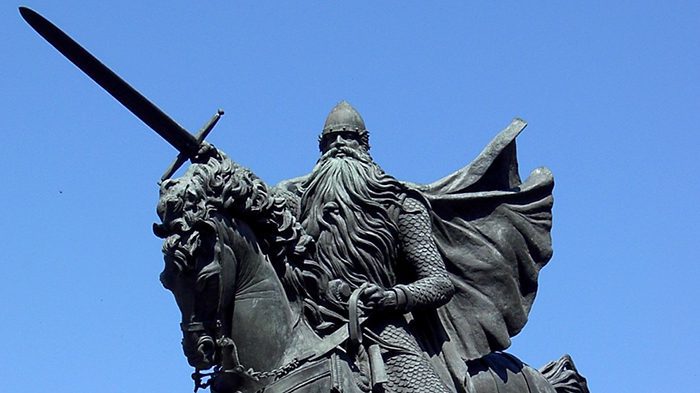
During the Peninsular War, which pitted Spain, Britain, and Portugal against Napoleonic France for the control of Spain and Portugal, French forces overran Burgos when the Spanish militia fled in the face of the coordinated French army.
It was the sight of yet another battle during the War of the Spanish Succession, which was fought over a potential unification of France and Spain. The Spanish Civil War, Francisco Franco, the leader of the rebel movement, based his army in Burgos. The city is also the final resting place of its most famous citizen, El Cid, who is credited with numerous triumphs in battles against Islamic forces and for conquering Valencia from them.
Check out our Top Things to See in Leon, Spain
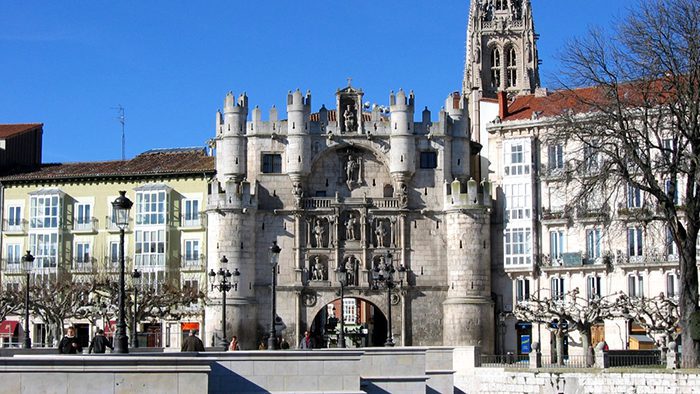
Burgos can also be credited with creating the Leyes de Burgos, or the Burgos Laws, which were the first set of legal codes to govern Spanish settlers’ interactions with the ingenious population in the New World.
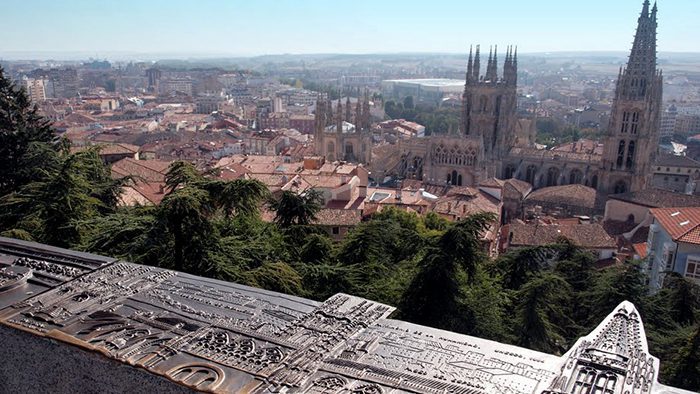
While in Burgos you may see backpackers walking through the city. These are just some of the hundreds of pilgrims that cross through Burgos on their journey through the Camino de Santiago every year. The Camino, which is the walk of Saint James, is a Christian pilgrimage to the northwestern Spanish region of Galicia on the Atlantic Ocean. The remains of the apostle Saint James are believed to be buried there.
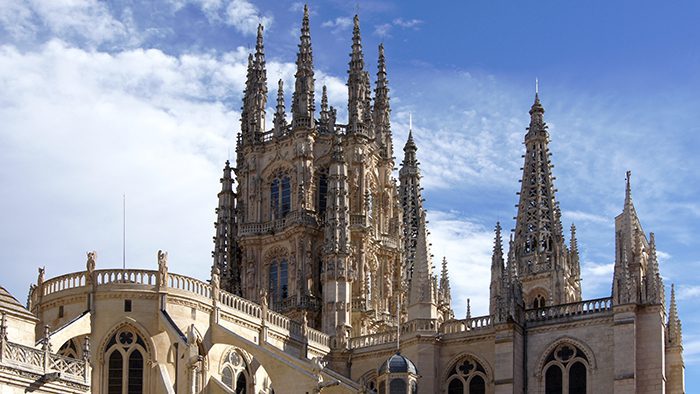
A famous must-try in Burgos cuisine is the Queso de Burgos, Spanish for the cheese of Burgos. It is a white, soft cheese that is often greasy because of its whey content. Originally made with sheep’s milk, it is now made with cow milk or a mixture of milks. Other popular local foods include Jamon Serrano, which is ham and Morcilla de Burgos, a pig’s blood sausage that is stuffed with onions, herbs, and rice.
Burgos is well connected to the rest of Spain and Europe via a new rail system and an existing bus system. Between these methods of transportation, visitors will find it fairly easy to travel between various locations within Burgos, within Spain and Western Europe. It is about 2.5 hours by train from Madrid and 3 hours by bus. Here are my top 10 things to see and do in Burgos, Spain.
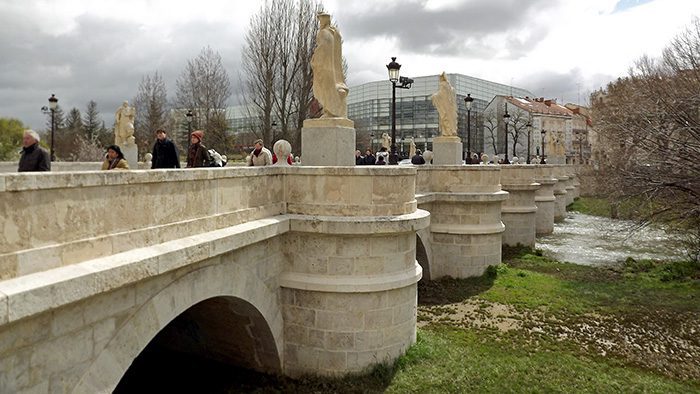
The most famous bridge in Burgos, the bridge (Puente) of San Pablo was built in the 13th century across from where the medieval gates of San Pablo used to stand. The bridge is lined with statues of Castilian noblemen from the Middle Ages, the most famous of whom was El Cid. His statue can be found at the northern end in the middle del Cid (you can’t miss it.) El Cid, born Rodrigo Díaz de Vivar, was a Castilian nobleman who became known for his prowess on the battlefield. His nickname, El Cid Campeador, literally translates to champion, or more specifically, the lord-master of military arts. His body now lies in Burgos Cathedral, but the bridge is available for all to enjoy. You will most likely find a great deal of pedestrians on and around the bridge at almost any hour.
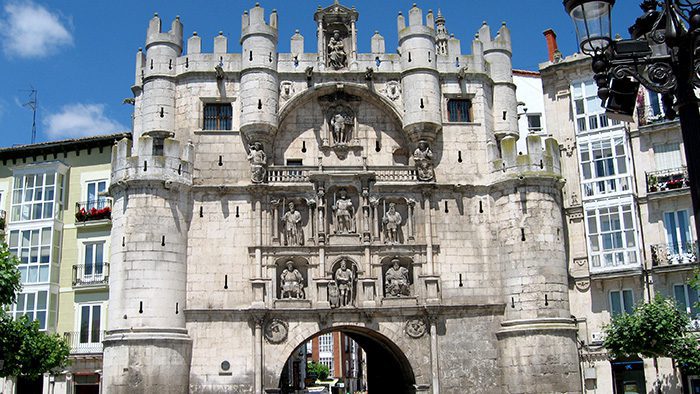
The arch of Santa Maria is an imposing stone relic from 14th century Burgos that immortalizes some the city’s greatest as well as its patron saint, the Virgin Mary. Crossing the bridge of the Arlanzon River and walking towards the Burgos Cathedral will take you to this triumphal gateway. Visitors will need to pass through this arch to enter the Plaza de San Fernando, which houses the cathedral. The arch’s façade was transformed in the 16th century to include the likenesses of numerous important citizens. Some of the more famous people on the cathedral’s exterior are the Emperor Charles Quint (Carlos I,) El Cid, Diego Porcelos- the city’s founder, and Nuno Rasura and Lain Calvo- two important figures in the courts of Castile.
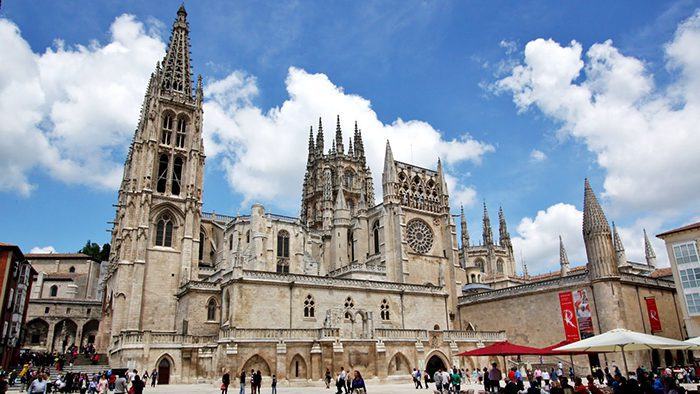
The immense Burgos Cathedral is a striking sight and impossible to miss in Santa Maria Plaza. Construction of the cathedral began in 1221, under the orders of King Ferdinand the III of Castile, but renovations continued for the next two hundred years! Because of the many modifications over the years, the cathedral displays an eclectic combination of French Gothic architecture on the exterior and Gothic, Baroque, and Renaissance styles inside. Its style bears significant resemblance to other Gothic cathedrals in both France and Spain. Dedicated to the city’s patron saint, the Virgin Mary, the cathedral also houses statues and sculptures by famous artists, including the Colonia family, Diego de Siloé, and Felipe Vigarny. The site was declared a UNESCO World Heritage site in 1984, and was the first Spanish cathedral to receive the honor by itself and not in conjunction with a center of a city or with other buildings. Interesting finds in the cathedral include the Papamoscas, the “flycatcher” statue that opens its mouth to the sounding of the bells, the tombs of El Cid and his wife, and the ornately carved choir chairs.

For a panoramic view of Burgos, head up the steps to el Mirador Castillo, which literally translates into the Lookout Castle. Detailed bronze etchings on the railings help visitors orient themselves to various landmarks and identify which buildings they are looking down at. You may recognize quite a few without the help of the bronze carvings- the cathedral and arch are at the forefront of your vantage point. The mirador is a great place to take all the pictures you like of Burgos and the surrounding countryside.
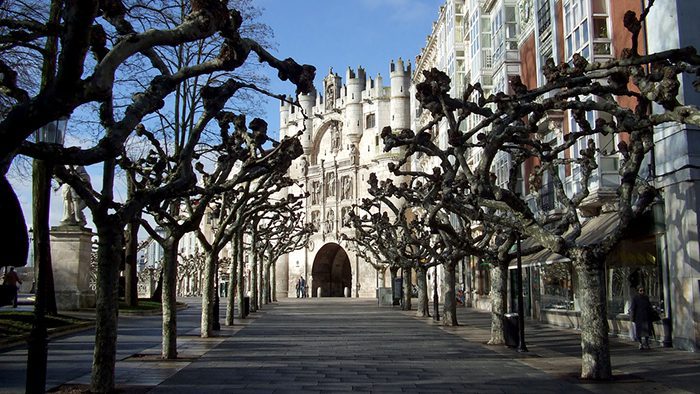
Paseo del Espolon is tree-lined shaded promenade that runs between the arch of Santa Maria and the bridge of San Pablo, and parallel to the Arlanzo River. This picturesque pathway has numerous cafes, shops, ice cream and churro shops, flowers, trimmed hedges, and sculpture along the way, which makes it a great place to stroll along and soak in your surroundings. This boulevard is also a popular local meeting spot for locals and offers access to other areas, including the Burgos Cathedral. Your afternoon café latte never looked so good.

Fairly little is known about the Ancient Wall of Burgos other than it is located next to the Castle of Burgos, which was built by Alfonso III the Great in approximately the 11th century to defend the city from the threatening Visigoths. However, certain portions of the wall date back to the 8th century. Visitors can hike the many stairs that will take them along the wall. I recommend seeing both the ancient wall and the Castle after visiting the Mirador Castillo. The wooded area around the wall is a great place to relax in the shade and take in the peaceful forest scenery.

One of the oldest castles in Spain, the Castle of Burgos is a grand stone structure that one of the most famous monuments in town. Alfonso III the Great, King of Leon, built it during the late 9th century as a defensive structure to keep the Moors out. The Moors were once the inhabitants of the city until Spanish forces ousted them. Certain sections of the castle are in ruins while others are in fairly good shape. Admission is only two Euros and the site features a small museum that contains a comprehensive history of the castle that once stood proudly on the site.
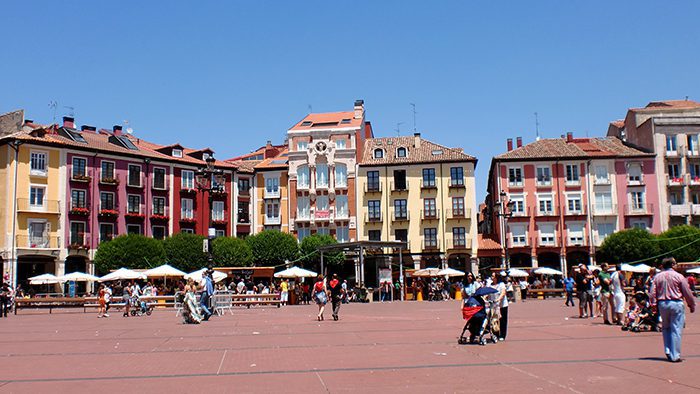
Burgos’ main square, Plaza Mayor, was once as vibrant as it is today but had a completely different purpose during the 1500s. It was used as the location to host the city’s weekly markets. Food, textiles, other items were sold by local farmers and traveling merchants. Plaza Mayor eventually became a significant place of commerce and from where the city’s economy was controlled. Nowadays the Plaza Mayor is a little less market but probably has just as many people in and around it all the time. The buildings that surround the square are now mainly government administrative offices. Locals often meet up at the Plaza Mayor before heading out with friends.
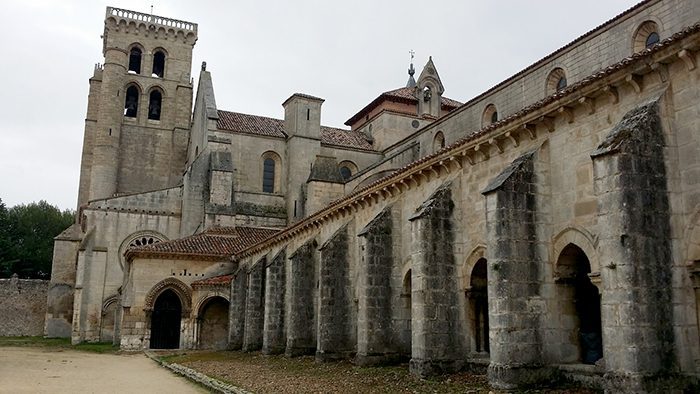
The Abbey of Santa Maria de Las Huelgas is a historic convent founded by Alfonso VIII of Castile in 1187 on the request of his wife Queen Leonora. One royal wedding that took place here was the union between Edward I of England and Eleanor of Castile in 1254. King Alfonso VIII bestowed the Cistercian Order Abess at the head of the abbey the power to hear confessions, hold her own civil and criminal courts, to preach, and the luxury of tax exemption status. She was a woman with a great deal of power in a time when women were at a significant social disadvantage. In 1931 the convent became a national monument. Although there is a community of sisters living on the grounds today, tourists can visit the convent. The convent contains the tombs of King Alfonso VIII and his queen, as well as detailed and masterful architectural designs. The Great Cloister room and courtyard were my two favorite features of the site. The abbey is closed on Mondays. Tours are in guided and in Spanish, and the prices are 2.50 Euros for students and seniors, and 5 Euros general admission.
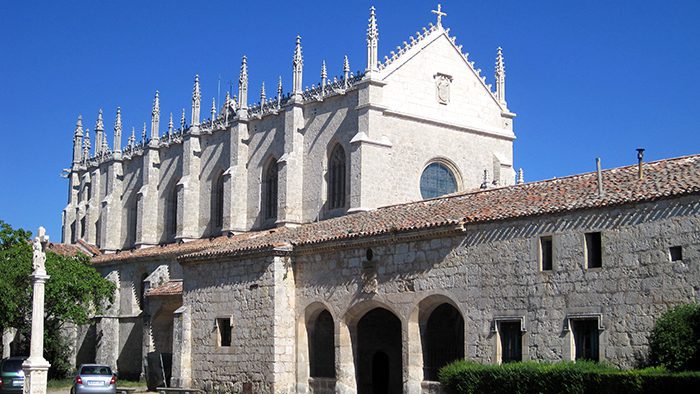
Located about four kilometers from the Plaza Mayor, the church in the Carthusian Monastery at Miraflores offers a glimpse into the rigid class roles that once dictated medieval life. The church was first built in 1401 but was rebuilt in 1484 after a destructive fire leveled it to the ground. The inside of the church is a single nave split into three sections. Medieval seating arrangements were taken very seriously with the lay people situated farthest from the alter and the clergy seated closest. The Church is also the final resting place of King John II, Queen Isabella of Portugal, which were the parents of Queen Isabella I and the grandparents of Catherine of Aragon. You will not find the remains of Queen Isabella I because her tomb lies next to that of her husband King Ferdinand II in Granada’s royal chapel. Queen Isabella of Portugal commissioned Gil Siloe, the best Spanish sculptor of the time, to create the alter, alter pieces and tombs for her parents. His masterful works in alabaster and wood are still in great condition and can be visited to this day.
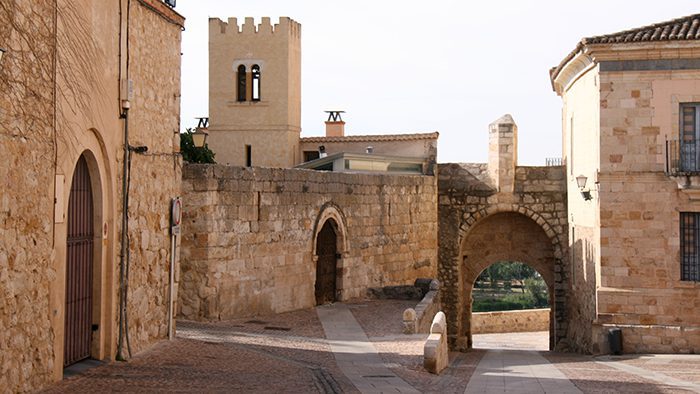
Seven kilometers north of Burgos lies Vivar del Cid with a population 140. This otherwise unremarkable town has one claim to fame: almost 1,000 years ago in the year 1043, the city’s namesake, Rodrigo Diaz de Vivar or “El Cid”, was born here. Everything in this town, from the buildings to the bridges, is dedicated to this Spanish national hero.
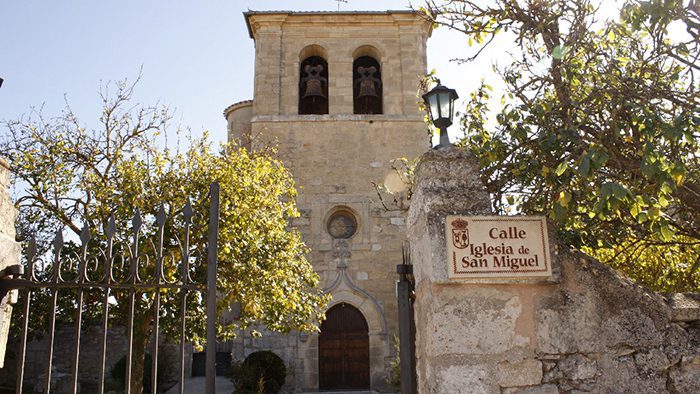
Although El Cid’s mother was an aristocrat, he lived a simple life in the town of Vivar and became the hero for the poor and the rich of Spain. A few years after his first battle at the age of 20 King Alfonso VI exiled him. He went on to command a Moorish army consisting of troops from every imaginable sect and cult under Yusuf al-Mu’taman ibn Hud, a Moorish king, and his successor Al-Mustian II. After the Christian defeat at the Battle of Sagrajas, he returned to Alfonso VI, who finally recognized his military prowess and welcomed him back. It was at this time that he earned the nickname El Cid Campeador, literally translating to Lord Master of the Military Arts. El Cid’s most famous conquest was that of Valencia from the Moors. El Cid was the protagonist in many poems and stories including “El Cantar del Mio Cid,” which is the oldest Spanish epic poem. The story is based on the real story of a brave warrior who helps conquer Spain during the Reconquista.
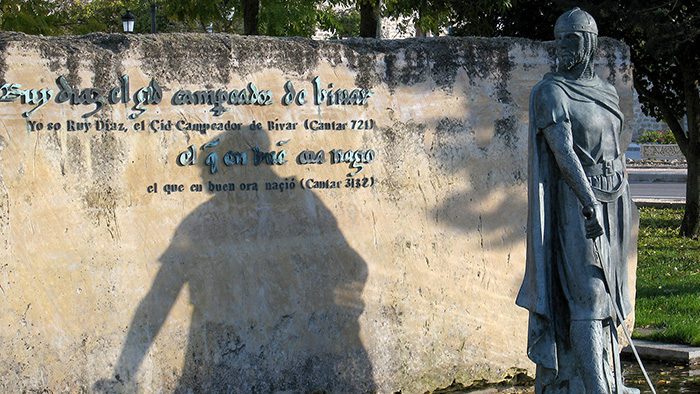
Vivar del Cid makes for a great short day trip that will have you back in Burgos toasting with copas in no time. The only places to visit in Vivar del Cid are the church of St. Michael, the El Cid monument, Casa Rural- a typical 10-bedroom house from the time complete with furnishings and kitchen, and El Cid’s windmill, which denotes the beginning of the Route of the Cid.
Have you ever visited Burgos? What are your top 10 things to see and do in Burgos? Leave a comment below!
Counter
101 Countries • 1432 Cities